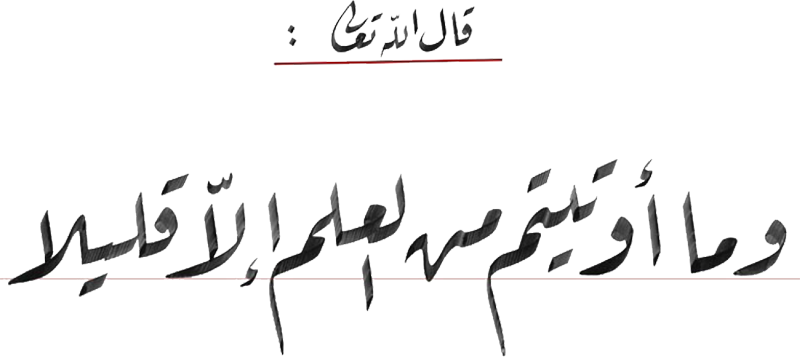Font and Typographical Considerations
Plan
- Arabic Style and Calligraphy
- Different Types of Writing Style
- Fonts and Styles
- Summary
- Some Final Remarks
- References.
1. Arabic Style and Calligraphy
Arabic styling and writing has its origin in Islamic art and
civilization, essentially used to decorate mosques and
palaces, as well as in beauty manuscripts, books, and especially
to copy the Koran. Arabic script is cursive making
it viable to support different geometric shapes overlapping
and composition. Words can be written in
a very condensed
form as well as stretched into elongated
shapes, so that scribes and artists of Islam
labored with passion to take advantage of all these
possibilities.
From the beginning of
Arabic calligraphy, two tendencies or two types of styles can be
seen emerging, the handwriting for the
decoration of mosques and sculptures, complex and shaped
enough, and writing style reserved for writing the
Koran, easier to use and more readable.
Writings styles / Arabic Scripts then evolved
according to cultural diversity, leading to regional
calligraphic schools and styles (Kufi in Iraq, Farissi
and Taʻliq in Persia or Diwani in Turkey),
or to the purpose of writing, such as the copying and
dissemination of the Korʼan.
In general we group under the generic term Naskh
(copy/inscription) the scripts reserved for books and texts
to be read, e.g. the Korʼan, and as Kufi (from city of Kufa in Irak)
the stylish scripts ornaments oriented.
Although further named styles appeared during the richer evolution
of Arabic scripts.
2. Different Types of Writing Style
Basics and principles of Arabic writing were then defined by Ibn
Moqlah (886-940 Higra) @@add a ref. Welch 1979@@ who
defined the Six Styles of writing: Kufi, Thuluth,
Naskh, Riqaʻ, Diwani and Taʻliq.
- Kufi
- One of the oldest and well known Arabic scripts. It is
characterized by its decorative and prononced geometric
forms well adapted for architectural design. The style grew up
in the beginning of Islam for the need for Muslims to codify the
Koran. @@ The script has some variations as Al Mouthafar,
Al Mukhamal, Al Handassi...)@@
- Thuluth
- (The third) One of the finest Arabic scripts by its beauty and
sight. Recognizable by the fact that the letters and words are
very interleaved in it complex form. May be the most difficult
in writing (need more skill), both in terms of letters or in
terms of structure and composition.
- Naskh
- One of the clearest scripts at all, with clearly distinguished
letters which facilitates the reading and the
pronunciation. Can be written with small size (traditionally
pens made of reeds and ink) which suits with writing longer
texts written in boards and books intended for general
population, especially the Koran. Currently Naskh is
considered the standard script for almost all the Arabic and
Muslim world.
- Riqaʻ
- The so-called in relation to a patcher, which is gazelle's
leather. Designed to be used for education, daily (not artistic)
writing and adopted in the Offices (Deewan) of the
Ottoman Empire.
- Taʻliq
- aka Farisi(Iran), Taʻliq (hanging) combines Naskh and
Riqaʻ (and Thuluth?). Beautiful
script characterized by the precision and stretch of its
letters, its clarity and and lack of complexity. Considered as
one of the best scripts in the world and is favored by many
Arabs calligraphers.
- Deewani
- TBD
Others...
- Nastaaliq Farissi
- TBD as Persian version derived from Nas(kh) and Taaʻliq.
It is like a Taaʻliq but easier to write and read...
3. Fonts and Styles
TBD.
Consider here technical constraints due to printing and
computers.
4. Summary
Yet to be completed...
Style
|
Description
|
sample
|
Pic
|
Kufi
(Diwan
kufi here)
|
Early time of Islam
3rd or 4th century
applied to the early scripts used to write the Koran
difficult to write any long text
|
الإعجاب
بالكتابة السحرية والمهارات |
 |
Naskh
|
The script of choice for
the Koran
Popular for writing books because of its legibility
Adapted for printing
The most common font in printed Arabic
|
الإعجاب بالكتابة السحرية والمهارات
الإعجاب
بالكتابة السحرية والمهارات |
 |
Nastaaliq
(Farisi here)
|
developed in Iran in the
8th and 9th centuries (wp)
Nas(kh)+Taaliq
|
الإعجاب
بالكتابة السحرية والمهارات |
 |
Reqaa
|
|
الإعجاب بالكتابة السحرية
والمهارات |

|
Diwani
|
Used in the Ottoman court
to write official documents
Difficult to read and write
Still in use today
|
الإعجاب
بالكتابة السحرية والمهارات |
 |
Thuluth
|
Support Harakat Indicators
Script par excellence for writing many different kinds of
texts
Used particulary for titles and architectural inscriptions
|
الإعْجَابْ بالكِتاَبَةِ
السِّحْريَةِ وَالمَهَاراَت
باسم لله الرحمان الرحيم
|

|
Rabat
aka Maghribi
|
Western Islamic world of
North Africa and Spain
Used for writing the Koran as well as other scientific,
legal and religious manuscripts
Not much used today.
|
الإعجاب
بالكتابة السحرية والمهارات
|

|
Taaliq
|
Arabic calligraphy
designed for Persian language. Until replaced by Nastaaliq
|
الإعجاب
بالكتابة السحرية والمهارات
|
|
5.Remarks
@@ Consider readability and accessibility when styling and
using newer fonts
...
6. References:
[1] "Arabic
Calligraphic Styles"
http://islamicart.com/main/calligraphy/styles/,
[2] "A
Brief Guide to Arabic Scripts and Calligraphy"
http://www.shutterstock.com/blog/2013/07/a-brief-guide-to-arabic-scripts-and-calligraphy/
[3] "The_creation
of style in Arabic writing"
http://www.academia.edu/6434123/The_creation_of_style_in_Arabic_writing
[4] "Customised
Arabic Calligraphy Designs"
http://www.nihadnadam.com/calligraphy/25/Arabic-Calligraphy-Styles
[5] "الخط العربي (Arabic Calligraphy)"
http://www.alargam.com/languages/khat/khat.htm
[6 ] Wikipedia
"الخط
العربي "
https://ar.wikipedia.org/wiki/%D8%AE%D8%B7_%D8%B9%D8%B1%D8%A8%D9%8A
"Islamic
Calligraphy"
https://en.wikipedia.org/wiki/Islamic_calligraphy





